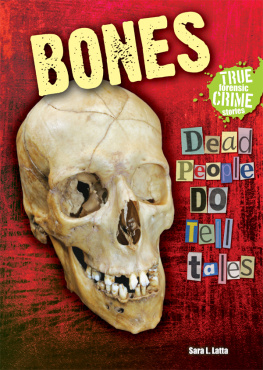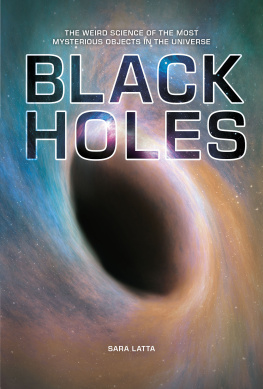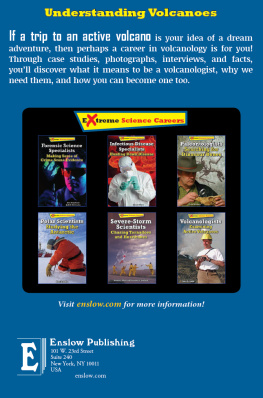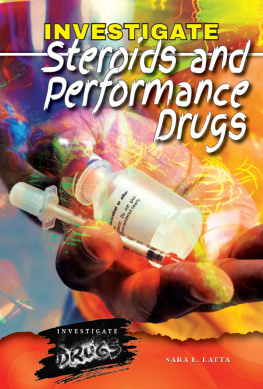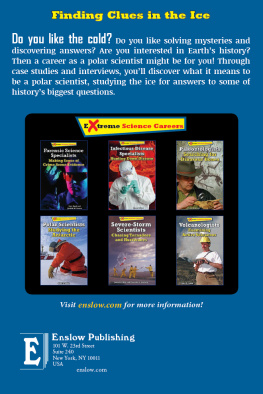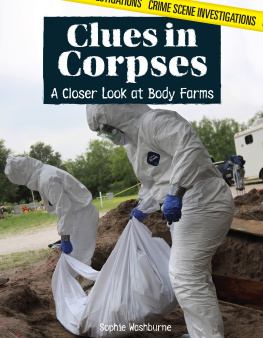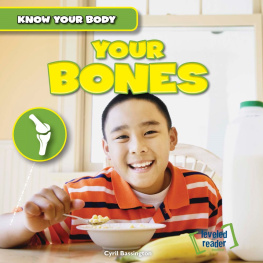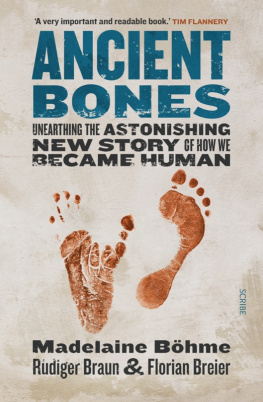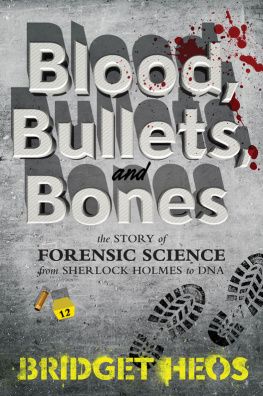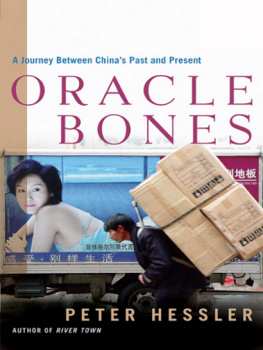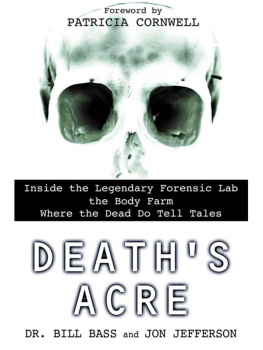Sara L. Latta - Bones: Dead People Do Tell Tales
Here you can read online Sara L. Latta - Bones: Dead People Do Tell Tales full text of the book (entire story) in english for free. Download pdf and epub, get meaning, cover and reviews about this ebook. year: 2013, publisher: Enslow Publishers, Inc., genre: Detective and thriller. Description of the work, (preface) as well as reviews are available. Best literature library LitArk.com created for fans of good reading and offers a wide selection of genres:
Romance novel
Science fiction
Adventure
Detective
Science
History
Home and family
Prose
Art
Politics
Computer
Non-fiction
Religion
Business
Children
Humor
Choose a favorite category and find really read worthwhile books. Enjoy immersion in the world of imagination, feel the emotions of the characters or learn something new for yourself, make an fascinating discovery.
- Book:Bones: Dead People Do Tell Tales
- Author:
- Publisher:Enslow Publishers, Inc.
- Genre:
- Year:2013
- Rating:5 / 5
- Favourites:Add to favourites
- Your mark:
- 100
- 1
- 2
- 3
- 4
- 5
Bones: Dead People Do Tell Tales: summary, description and annotation
We offer to read an annotation, description, summary or preface (depends on what the author of the book "Bones: Dead People Do Tell Tales" wrote himself). If you haven't found the necessary information about the book — write in the comments, we will try to find it.
All bones tell a storyyou just have to know how to read them. Forensic anthropologists can tell if found bones are from a human or an animal, are male or female, and how a person lived and died. Discover the techniques forensic anthropologists are using to solve both modern and ancient crimes!
Bones: Dead People Do Tell Tales — read online for free the complete book (whole text) full work
Below is the text of the book, divided by pages. System saving the place of the last page read, allows you to conveniently read the book "Bones: Dead People Do Tell Tales" online for free, without having to search again every time where you left off. Put a bookmark, and you can go to the page where you finished reading at any time.
Font size:
Interval:
Bookmark:
THE STORY BEHIND THE BONES
All bones tell a storyyou just have to know how to read them. Forensic anthropologists can tell if found bones are from a human or an animal, are male or female, and how a person lived and died. Discover the techniques forensic anthropologists are using to solve both modern and ancient crimes!
Filled with compelling true crime stories, Bones: Dead People DO Tell Tales offers an intriguing introduction to forensic anthropology for young readers. Those interested in forensic investigation will fi nd it engrossing.
Assistant Curator of Archeology
Panhandle-Plains Historical Museum
Canyon, TX
About the Author
Sara L. Latta lives and writes about science and medicine from her home in Illinois. She has a BA in Microbiology, an MS in Immunology, and an MFA in Creative Writing.


Metairie, Louisiana, a suburb of New Orleans, was badly damaged during Hurricane Katrina in 2005.
Lynne Landreneau was worried about her aging father, Leroy Adams. Leroy had gone to live with his son Lon and grandson after Hurricane Katrina destroyed his New Orleans home in August 2005. The hurricane hit the Gulf Coast states with a fury that caused nearly $81 billion in damages and took the lives of over 1,800 people. Landreneau had seen her father during the Christmas holidays that year, although Katrina had made it hard for anyone to feel merry. But after that, every time she called Lons house to talk with their father, her brother made up some excuse for why he couldnt come to the phone. Hes sleeping, Lon might say. Hes tired. Hes not feeling well. Hes angry with you and doesnt want to talk. Finally, shed had enough. She filed a missing persons report in June 2008.
The deputies searched Lon Adamss home in Metairie, a pleasant suburb of New Orleans. But what they found in a bedroom upstairs was far from pleasant. The remains of someone who had clearly been dead a long time lay on a bare mattress. Detective Todd Giacona said the room had what he called a Katrina smell: Mildew with a mixture of death. He suspected that they had found Leroy Adams, but the body was so badly decomposed that it was impossible to tell.
So the authorities called Mary Manhein, known around those parts as The Bone Lady. Manhein is a forensic anthropologista scientist who studies human bones to answer legal questions, often in criminal cases. Manhein has seen many bones that bore silent witness to the lives and often-tragic deaths of their owners.
When Manhein and her team from Louisiana State Universitys Forensic Anthropology and Computer Enhancement Services (FACES) Lab arrived on the scene, they took pictures, made notes, and carefully slid a piece of cardboard under the remains and placed them into a body bag.
Back in their laboratory in Baton Rouge, they examined the bones. From the shape of the pelvis and the skull, they could tell that the remains had belonged to a man. The wear and tear on his bones told them that he had been an old man. The dried-out nature of the bones and little bits of remaining tissue told Manhein that the man had been dead for several months to years. By comparing the mans dental and medical records with his teeth and bones, they soon confirmed that these were the remains of Leroy Adams.
As Manhein and her team prepared to X-ray the skeleton, they noticed some injuries. Several of his ribs, his fingers, a toe, a vertebra, and a U-shaped bone in his neck, the hyoid, had been broken. She could tell that these bones had been broken at or around the time of death; the jagged breaks had not yet begun to heal. And she could see where fluids from the decomposing body had seeped into cracks in the bone.
Based in part on the forensic evidence, Lon Adams was charged with murdering his father sometime during the first half of 2006.
At the trial, Adams wept as he confessed that he believed he had accidentally killed his father. I couldnt admit to myself that I might have accidentally killed daddy, he told the jurors. I dont think I could have admitted it to anybody else. And so he left his father in the upstairs bedroom of his home. He didnt return to his fathers slowly decomposing body for the next two and a half years.
Adamss attorney argued that the old man mostly likely fell out of his bed and onto a nearby footlocker, causing his fatal injuries. The son had simply slipped and fallen on his fathers neck while trying to get him back into bed.
Manhein, a witness for the prosecution in Adamss trial, found that scenario highly unlikely. So did Dr. Karen Ross, the medical examiner who determined that Adams had been murdered. In my opinion, Dr. Ross said at the trial, I dont see how a fall onto that foot locker would account for all those rib fractures. I think it was intentionally inflicted trauma, either punching or kicking.
In the end, the story the bones told won. The jury found Lon Adams guilty of manslaughter.
Forensic anthropology uses the scientific study of humans to answer legal questions. Forensic comes from a Latin word referring to the forum. The Roman forum was a place where legal issues and politics were discussed and debated. Today, the practice of public speaking and debating is often called forensics. The term forensic science has come to mean science used in a court of law or the justice system.
Anthropology is the scientific study of humans and our ancestors. Some anthropologists study languages or cultures. An anthropologist who studies past cultures is an archaeologist. Biological anthropologists specialize in human anatomy and the biology of skeletons. Forensic anthropologists fall into this category. Most adults have 206 bones, but just like fingerprints, no two skeletons are alike. To biological anthropologists, the bones tell the story of a persons lifeand sometimes death.
When law enforcement officers discover the body of a person who has died from unknown causes, or from a suspected murder or suicide, they call a medical examiner or coroner to help investigate the scene. If the remains are badly decomposed or mutilated, or just a skeleton, the investigators will often ask a forensic anthropologist to help figure out the persons identity and how they died. Many forensic anthropologists have some training in archaeology, which makes them valuable in helping investigate crime scenes. They may help dig up buried remains, take photographs and soil samples, or look for footprints and other tell-tale clues at the site. They examine insect activity and chemicals around the body to help determine how long the person has been dead. Once the investigators have thoroughly examined the site, they send the bones and remains to a lab for further study.
Imagine that you are a forensic anthropologist. The police have found some bones in a wooded area nearby. They would like you to take a look at them. Your first task is to determine whether the bones are human. Douglas Ubelaker, an anthropologist at the Smithsonian Institution in Washington, D.C., says that between 10 and 15 percent of the bones sent to the FBI for investigation are not human at all. For example, the bones of a bears paw look a lot like those of a human hand. As a biological anthropologist, you have the training that allows you to tell the difference between the bones of animals and humans. If there is any doubt, many physical anthropologists often have collections of animal skeletons to compare with human bones.
Font size:
Interval:
Bookmark:
Similar books «Bones: Dead People Do Tell Tales»
Look at similar books to Bones: Dead People Do Tell Tales. We have selected literature similar in name and meaning in the hope of providing readers with more options to find new, interesting, not yet read works.
Discussion, reviews of the book Bones: Dead People Do Tell Tales and just readers' own opinions. Leave your comments, write what you think about the work, its meaning or the main characters. Specify what exactly you liked and what you didn't like, and why you think so.

